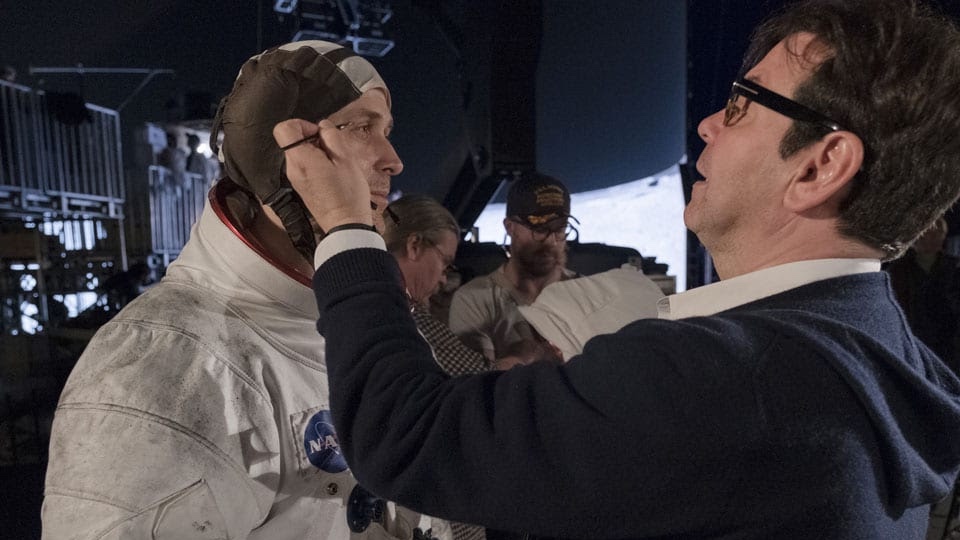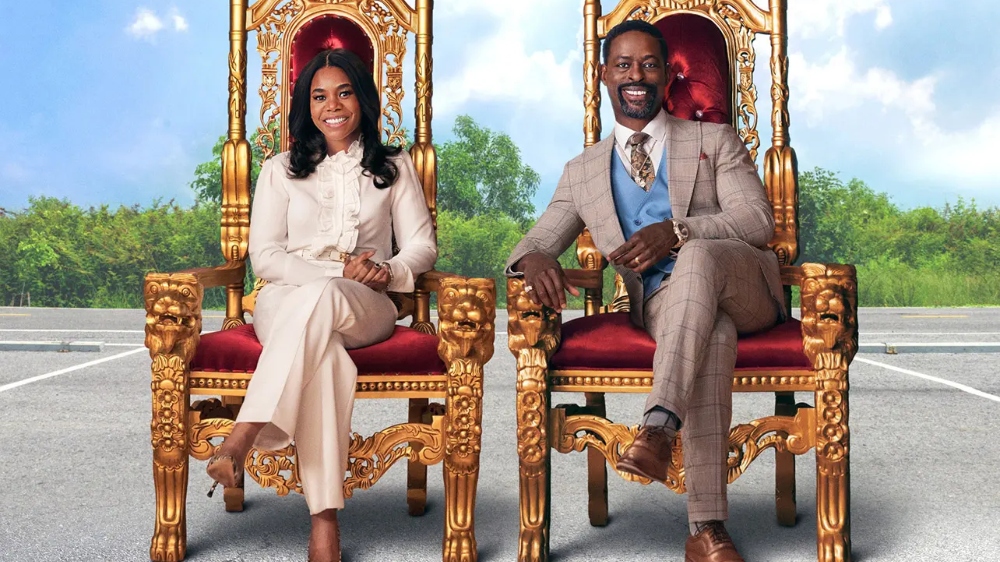
After debuting at the Sundance Film Festival, Adamma Ebo‘s comedy Honk for Jesus. Save Your Soul. is now playing in select theaters and streaming on Peacock, and it’s the latest movie to find a religious figurehead embroiled in a public scandal. Trinitie Childs (Regina Hall) and her husband, Lee-Curtis (Sterling K. Brown), are at the center of this scandal, and the film, which is one part mockumentary, one part satirical drama, chronicles their attempts to relaunch their church in its wake.
The film’s Director of Photography, Alan Gwizdowski, prefers the term “faux documentary” to “mockumentary,” as he’s not out to mock the form, and believes that “real” documentaries aren’t all that different from comedic ones. Gwizdowski is especially well-versed in the latter thanks to his work on Netflix’s American Vandal and the new Paramount+ series Players.
Below the Line recently spoke with Gwizdowski, who talked about recreating the distinctive look and feel of a streamed church service using the kind of technology and equipment that a real house of worship would employ, and offered his thoughts on the film’s day-and-date release on Peacock, where the majority of its audience will ultimately see the movie.

Below the Line: How did you first become involved with Honk for Jesus. Save Your Soul.?
Alan Gwizdowski: I was referred to the director by another DP, Adam Bricker, who was actually originally scheduled to shoot this, but then he had a scheduling conflict and he recommended me. I also knew the producer, Kara Durrett. We’ve known each other for years, and with a recommendation coming from both of them, I met Adamma and [producer] Adanne Ebo, and we just hit it off right off the bat.
BTL: Were you aware of the short film beforehand, and did you discuss it with them?
Gwizdowski: I didn’t know of it before the interview, before being contacted about the feature. So right off the bat, they sent me the script [and] they sent me the short so I had an idea of what it was, in general, that we were doing, but that was the first time that I had heard of the project.
BTL: As a cinematographer, how much does something like a short affect your work and your approach?
Gwizdowski: Not too much. I know that it was a separate project, and it was something that we wanted to expand upon, but we weren’t really taking many aspects of the short and trying to move them over to the feature. We were starting fresh. Since I wasn’t involved in the short in the first place, it wasn’t too much of an influence on me. It obviously was for Adamma, and that was one step in the process, but, for me, it wasn’t too much of an influence.
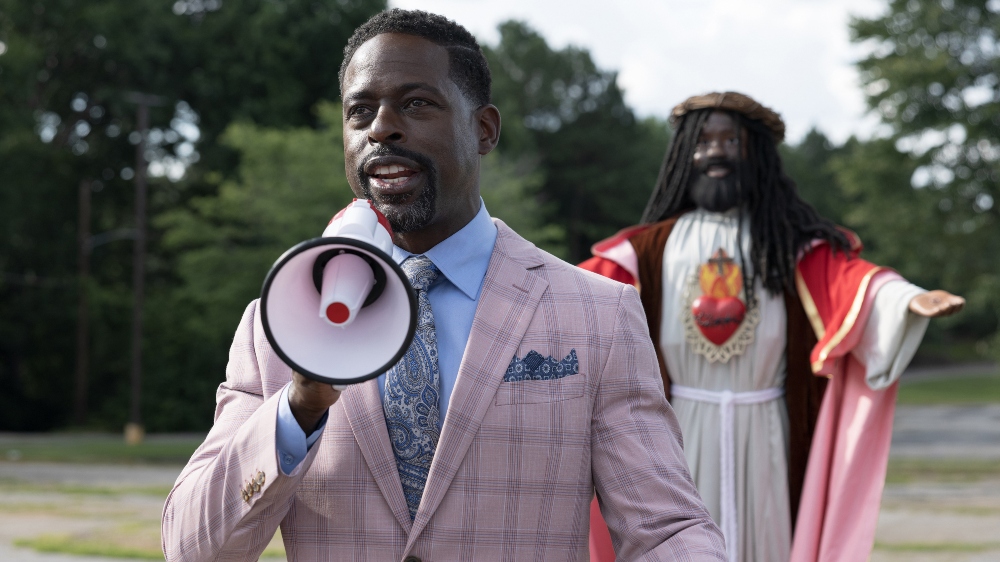
BTL: There are two things that are very much at play in this film, at least from a camera perspective. One is that it’s a mockumentary, and the other is that it’s about a church. How did those two things go hand-in-hand?
Gwizdowski: The mockumentary portion of it — actually, I like to call it a faux documentary because it is a fake documentary — but I tried to treat it as realistic as possible, as far as the lighting and camerawork. But then, when it comes to the media from the church, I did grow up going to a Roman Catholic church. I had never really been to a church that had a full-on media department like these megachurches do.
That was an eye-opener to see how big those productions are. Once I started to dive into research on “what kind of angles do we want to match?” and “what is the look of these sermons and how [do] they approach it,” I realized how big those productions really were in the full-on media department that each church had. That was really interesting to me and super fun to play with.
BTL: I think a lot of people experience megachurches solely through media. They don’t actually have to go in person, so you have to have a different kind of power and impact in terms of what you lens and how you frame it.
Gwizdowski: Yeah, actually, that’s the only way I really knew of megachurches at all, just seeing clips online or YouTube videos, more so in a way that poked fun at it, because I never really tuned in to an actual sermon, but you would see these clips just showing how opulent the churches are and it always stood out as something insane to me. How does it get that big? How does it have that much money involved, and how is it that people are following along when they see that the pastors are using this money for things that are not necessarily what you would consider God’s work?
BTL: What kind of camera equipment did you need in order to mimic that look?
Gwizdowski: We actually were provided some footage from the church itself. So anytime you see a big wide shot of the crowd, that’s from a real sermon in the past, and it’s using the Sony Betacams that the church had. They were under renovation and were in transition with their media process, so they have a bunch of equipment [and] newer cameras, but in the actual sanctuary of the large church, they use the old Sony Betacams SD footage, and that’s the footage that they provided to us.
When we were shooting Sterling up on the stage for the sermons, we actually used the same Sony Betacams that they had at the facility, turned them around, shot them towards the stage, and we had to work within the angles possible [in] the narrow windows that we had with a few extras to sell that he was actually there with some people. But everything that is looking out towards the crowd was existing archival footage from the church.
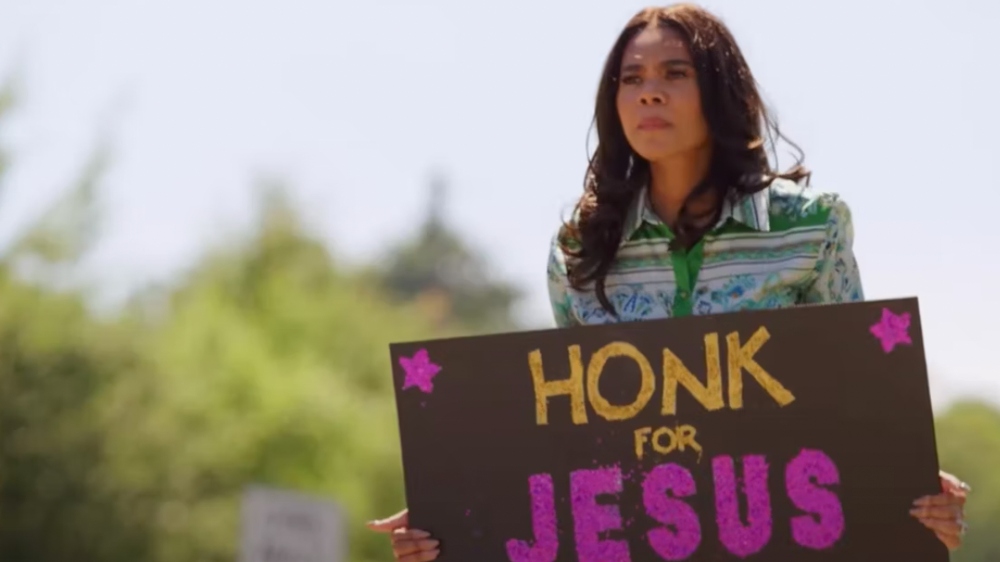
BTL: Were there additional challenges presented by shooting in that space?
Gwizdowski: Definitely. It was under construction, so a lot of the lighting didn’t work. They were taking the down period with the pandemic to renovate the church, so a lot of things were out of sorts and didn’t quite work. We were using the existing lighting as much as we could but we did have to swap out a lot of fixtures that were out or needed replacement.
For the most part, when it came to lighting in the church, I was working with [a guy named] Benton, who is the head of the media department at the church, and he showed me the pre-programmed lighting setups that they had for any given point of a sermon, whether the preacher is supposed to be at the pulpit or a certain part of the stage… or if there’s a baptism going on at the baptism pool, that’s a whole separate little section.
They can have these pre-programmed lighting setups for what they would actually do in the church, and I used that as a baseline for what we wanted to do. I would pick the best ones for whatever the given scene needed and then augment on top of that, adding our lights in as needed. But as much as possible, we tried to do what the church actually would do.
BTL: It sounds like this was a very collaborative experience. Did church officials mind that the film is a satire or parody of the church, in a lot of ways?
Gwizdowski: That’s a good question, I’m not entirely sure. They were very collaborative and they let us do basically anything that we needed to. They didn’t seem to have any problems, but I wasn’t entirely sure how much of the story they were tuned into. I know the scripts were given to them. I don’t know how they actually felt about that. But I know that they had let other productions shoot there as well. One of the shows from Oprah‘s network, Greenleaf, was shooting there, but apparently, that one was much more risqué than we were even doing, so if they let that one shoot there then I felt like we were okay.
BTL: On the note of the faux documentary style, I know you have experience with that from American Vandal and other shows. Was there anything different about how this film was supposed to look?
Gwizdowski: This one was different in the sense that it also had the traditional narrative style. American Vandal, as well as Players, another show that I did for Paramount+, were entirely in the faux documentary space. So the entire thing needed to feel like it was a documentary, but as far as this one goes, that was basically just half of the film. Then there was the portion that you see behind the documentary or that the documentary cameras are not supposed to be seeing. So that needed to be, we were calling it, our cinematic mode.
So we had documentary mode and cinematic mode, and that needed to be a completely separate style from the documentary look. We still wanted it to feel within that same world, or as close to it as possible, so we decided to make the distinction for that really only through the cameras and the different settings, different lenses, and different color palettes. As far as the lighting goes, we kept that the same all throughout, so there was no difference in how we lit the documentary scenes versus how we lit the cinematic scenes, so [the lighting] felt like a throughline to bridge those two parts.
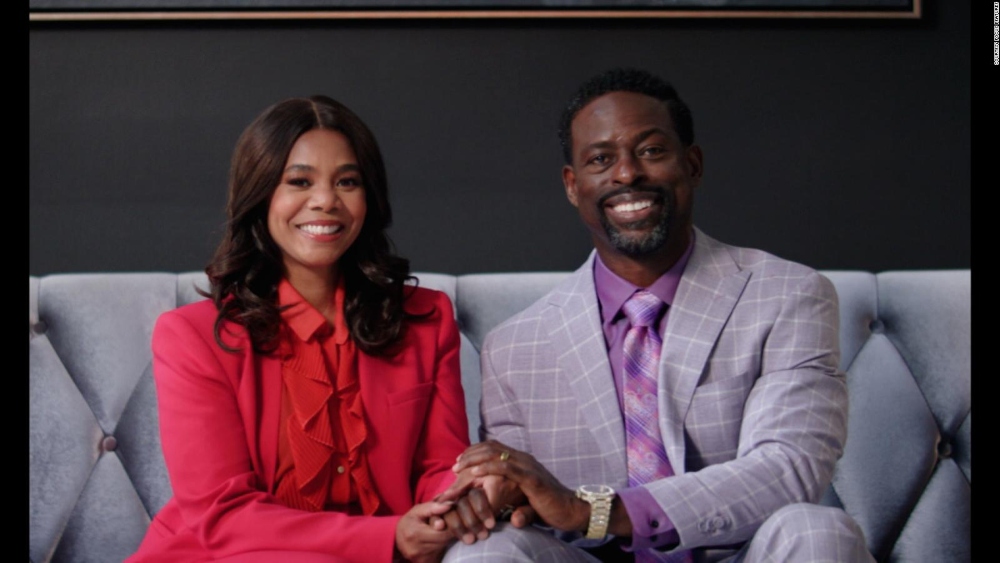
BTL: Do you have a preference between the two styles?
Gwizdowski: I can’t really say I have a preference between the two because they both serve a purpose in the film. It was definitely fun to do the more cinematic style, having done several faux documentary-style projects. It was fun to bring in the anamorphic lenses and use Gimbals and give it a more smooth, clean look, as opposed to the documentary, which needed to feel a little dirtier and on-the-go and reactionary to everything. So the cinematic mode was a little more dialed-in and intentional, as opposed to the documentary being “let the actors go do their thing and let the cameras follow and see what happens.”
BTL: Speaking of cinematic mode, I know this one was supposed to premiere in a theater at Sundance, but obviously that didn’t happen because the festival went entirely virtual again. And now it’s playing in theaters, but I imagine it will probably be seen more widely on Peacock. How does the fact that this is mostly going to be a home viewing experience sit with you?
Gwizdowski: I think it’s par for the course. It’s what most people are used to these days. If you can make it to the theater and watch a movie, then I think that’s great, and it’s a super fun way to see it, but I think it lends itself really nicely to being a television project. Most documentaries people see on TV, I feel like. It’s something that you typically watch at home. Maybe you’ll see a documentary at a festival or something like that, but typically you’re not going to the movie theater to watch a documentary. So I think being at home and watching it on the TV is the right platform for it.
BTL: That’s good to hear. I’m sure there are a lot of filmmakers who don’t feel that way, but I think a lot of projects, and especially documentaries, have a higher profile once they begin streaming.
Gwizdowski: Yeah.
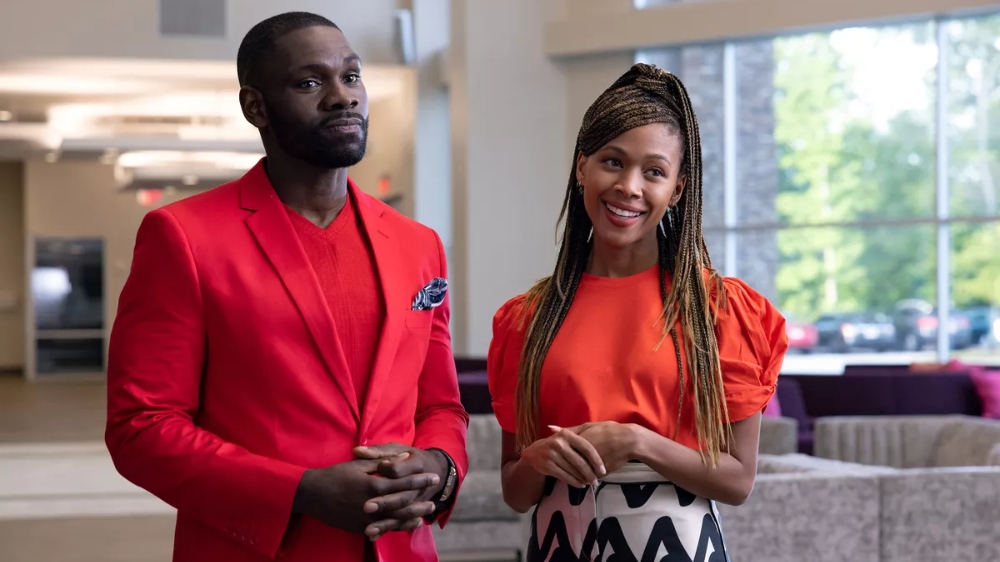
BTL: What else do you have coming up?
Gwizdowski: I have another movie actually premiering the same weekend. They were shot almost a year apart, but they just happen to be premiering the same weekend. It’s called Out of Office. It’s premiering on Comedy Central and then [it] will be on Paramount+ after that. And then the other big project was Players. All the episodes finished streaming about a month ago, so everything is available to see on Paramount+. That one’s a faux documentary about an esports team on the road to their first championship, following them throughout the entire season of gameplay.
BTL: Can you discuss your approach to that series, given that esports, like other sports, is often consumed via visual media?
Gwizdowski: The approach was very much to keep it as authentic as possible and try to make it look like the broadcast that they do for the actual sporting event. They go all out. If anybody hasn’t seen an esports competition, they have full-on broadcasts and treat it like it’s an NFL game. They sell out stadiums, and we wanted to make it feel as real as possible when it comes to how it looks.
And then also, part of that world is streaming and the online presence, so all the background content and archival footage that we made was trying to mimic as closely as possible how it looks on YouTube, how it looks on Twitch, and all the online streaming stuff. So, in the end, we actually ended up using 13 different types of cameras. We had 44 cameras in total, but it’s just a big mix of trying to match all these different looks.
BTL: Before I let you go… should a faux documentary and a documentary only be distinguishable in their content and look pretty much the same otherwise?
Gwizdowski: That is my feeling. That’s the approach that I like to take. It doesn’t mean you have to do that, but, for example, [in] something like The Office, where the camera work is in on the joke, it accentuates the joke with a pop zoom. Essentially, if the camera work is part of the comedy, the way I like to treat it and the system that I’ve come up with over the years, working on these kinds of projects, is that if you treat the camera work and the lighting as seriously as possible and make it feel like a real documentary would, then let the comedy or the drama come from the characters and the ridiculous situations that they find themselves in. Let the comedy come from that. That’s the approach I like to take.
Honk for Jesus. Save Your Soul. is now playing in select theaters and streaming on Peacock.




